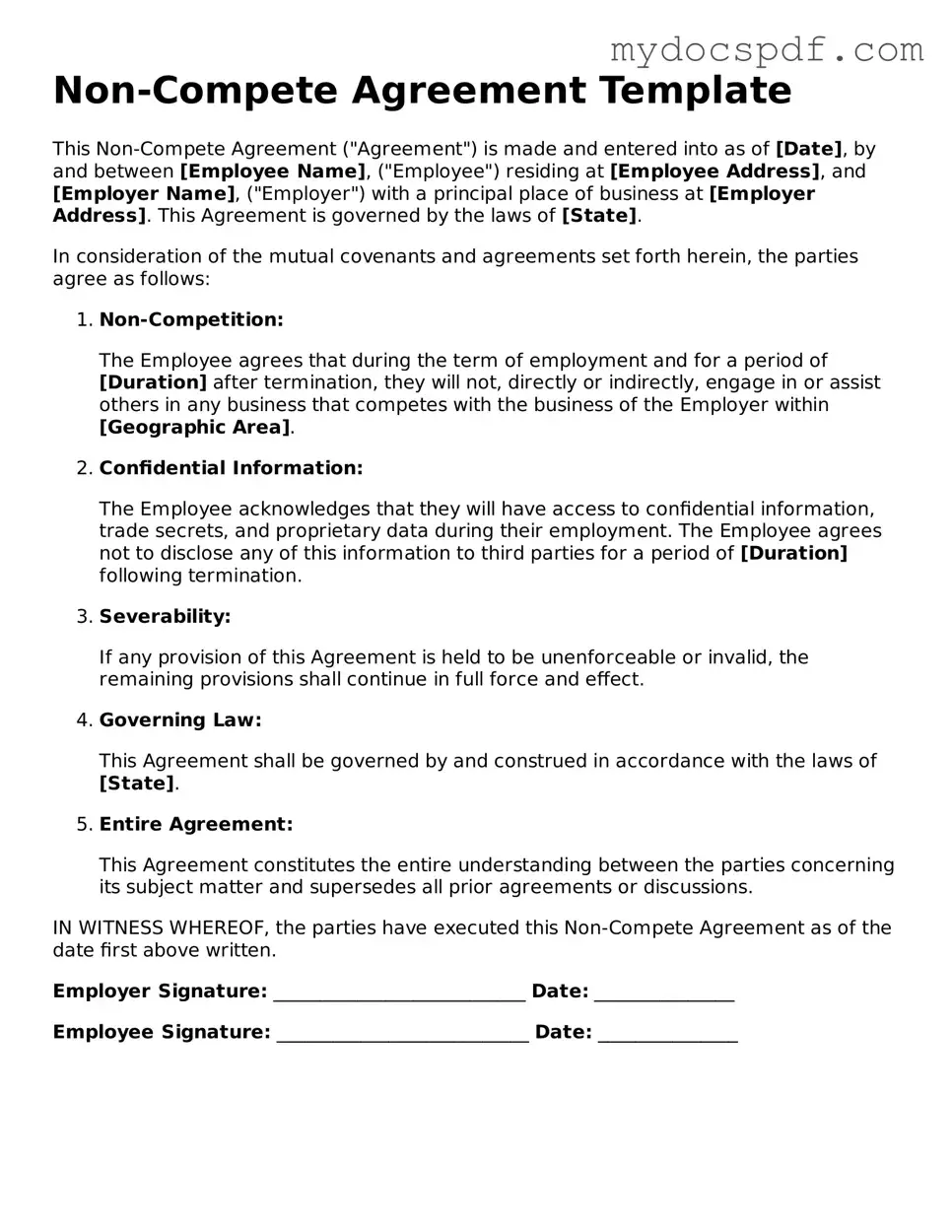Non-Compete Agreement Template
This Non-Compete Agreement ("Agreement") is made and entered into as of [Date], by and between [Employee Name], ("Employee") residing at [Employee Address], and [Employer Name], ("Employer") with a principal place of business at [Employer Address]. This Agreement is governed by the laws of [State].
In consideration of the mutual covenants and agreements set forth herein, the parties agree as follows:
-
Non-Competition:
The Employee agrees that during the term of employment and for a period of [Duration] after termination, they will not, directly or indirectly, engage in or assist others in any business that competes with the business of the Employer within [Geographic Area].
-
Confidential Information:
The Employee acknowledges that they will have access to confidential information, trade secrets, and proprietary data during their employment. The Employee agrees not to disclose any of this information to third parties for a period of [Duration] following termination.
-
Severability:
If any provision of this Agreement is held to be unenforceable or invalid, the remaining provisions shall continue in full force and effect.
-
Governing Law:
This Agreement shall be governed by and construed in accordance with the laws of [State].
-
Entire Agreement:
This Agreement constitutes the entire understanding between the parties concerning its subject matter and supersedes all prior agreements or discussions.
IN WITNESS WHEREOF, the parties have executed this Non-Compete Agreement as of the date first above written.
Employer Signature: ___________________________ Date: _______________
Employee Signature: ___________________________ Date: _______________
